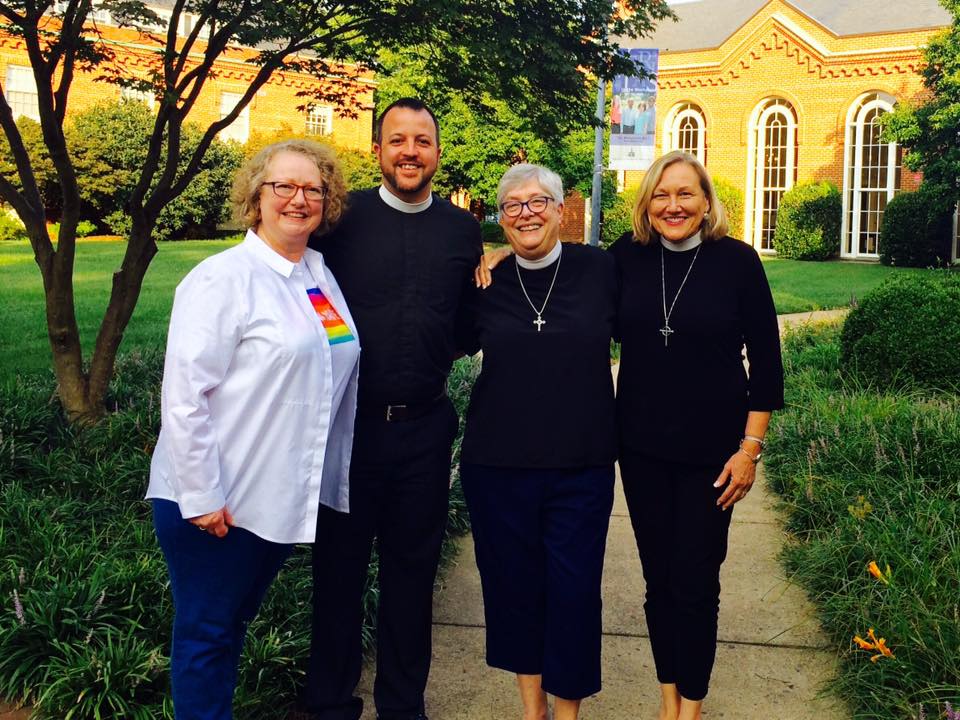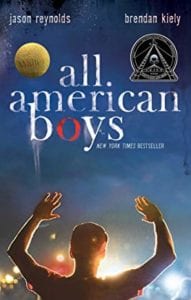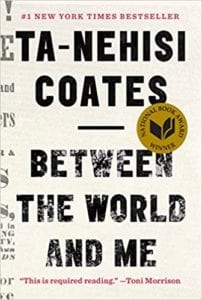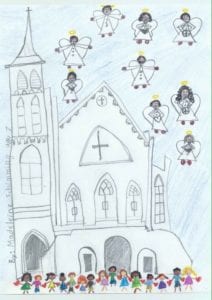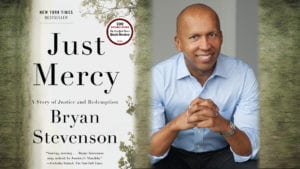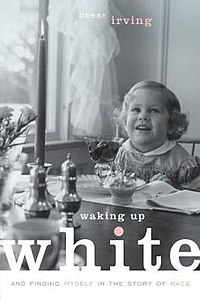The Selma Pilgrimage is set to embark on Tuesday morning, March 8th, at 7:00 am. A group of East Tennessee Episcopalians will gather outside St. Martin of Tours Episcopal Church, Chattanooga to board their bus to Selma. As we reflect on each stage of this journey, we will share photos from different stops and reflection videos from various participants below.
Photos
Tag along with the pilgrims through photos throughout the pilgrimage. You can also view the photo album directly on Facebook.
[custom-facebook-feed feed=3]
Videos
Written Reflections
Pilgrimage to Selma
By Alice Smith
My heart broke at the sight
of windows boarded…
shops empty…
streets deserted…
parking aplenty…
This run-down little town
whose famous Bloody Sunday
is part of southern history
was filled with people
telling stories,
painting promise,
turning worry into wonder
and heartache into hope.
It’s a loving work in progress
tearing off the scabs
and building back the broken,
but I could see it happening
before my very eyes.
On the third day I rose
and dined with WeKandodis,
a bald, Black angel
armed with loving kindness
and filled with fearlessness.
She changed her name to WeKandodis
because she knows that WeCanDoThis.
We bid our fond farewells
and headed out of town.
Leaving Selma, I saw redbuds
bursting into bloom,
and my heart that entered broken
left blossoming with hope.
View from the Bridge Tender’s House
by Kemmer Anderson
“The arc of the moral universe is long,
but it bends toward justice.” Martin Luther King
At the broken foundation of the old bridge
Across the Alabama River, I eye the bending
Metal arch over the Edmund Pettus Bridge:
Listening for the echoed soles walked, worn
On the beaten path toward the right to vote.
So too the bridge of the Spirit bends us toward
Freedom waiting for something more than words.
I feel the hand of John Lewis pressing again on my
Right shoulder aiming this pen toward a journey
Of nonviolence to places I do not want to go.
Up river to the source, morning winds urge
To cross over the river to those waving hands
Of saints, witnesses calling us forward
To hear their story, bending our soul toward
Justice into the whirl of history here in Selma.
Overlooking the Bridge at Selma
By Arthur Stewart
On the tour a guy told us
this was the place
all that stuff came down:
right here,
at the bridge
and horse hooves clapped
steps at the entrance to the Tabernacle church.
Back then things
in Selma seemed so seamless, at first.
But the seam was there
under the dark currents
and it ripped open.
The speaker, a hefty guy,
said he marched then
as a student and was
several times
beaten, taken to jail,
blood all over.
This morning the river’s surface
ruffles slightly under a slight breeze;
it takes so little
to unsettle a river’s surface.
Along the banks
under the morning sun
counter currents
evidenced by fine debris
floating, moving
the wrong way; the slicks
edge upstream, casually
in silence.
At night back then
when the Klansmen were about
horns blew:
get down, be safe, they’re out.
John Lewis and 16 others
got the crap beat out of them
on the bridge, with
billy clubs whips cattle prods
on bloody Sunday, as they tried
to go over: trying, they tried hard
to make a wrong thing right.
The bridge spans the river:
a steel central arch, concrete
side arches; the bridge lets
traffic flow over
and water flow under.
Selma is broken; lost,
struggling to rise.
When we leave at last
the bridge
reflects
from the smooth surface of the water;
the water
still moves.
Journal of the Journey
Tuesday, March 8
7:30 am, St. Martin of Tours Parking Lot, Chattanooga – In the early hours of the morning, 30 pilgrims gathered to board the coach to begin their pilgrimage to Selma, Alabama. With breakfast in hand and cheerful hearts (and some sleepy minds), the pilgrims, headed by Rev. Robert Childers, Bishop Brian Cole, and Nicole Seiferth, embarked upon their journey to encounter the birthplace of the Civil Rights movement.
11:00 am, 5 and Dime, Selma – The pilgrims have arrived at the 5 and Dime, a large former Woolworth’s building on Broad Street (Selma’s main street), only two blocks from the Edmund Pettus Bridge, that has now become a community art center and loft apartment complex. The walls are lined with artwork by AC Reeves. Cyanotypes and mixed media compositions by Reeves encircle artwork by featured artist Timothy M Joe. Mismatched chairs and tables clutter the room, imbuing the scene with a sense of eclectic egalitarianism. The back wall is painted with a globe, hearts dot the surface, but a concentration of hearts hovers over the Southeast of the United States. Love across the nation coalesces around a southern heart. These southern hearts are gathering now in this southern space to tackle a beautiful, complex, and flawed southern history.
After lunch, 5 and Dime – AC mounts a tall ladder, an appropriate artist’s pulpit, to orient the pilgrims to the landscape of Selma in sweeping and pointed terms. Selma is a place of the past, evidenced by the perpetual, gentile decay reminiscent of more southern destinations such as New Orleans. But it is a place of progress and the future, AC points out. As Rev. Robert Childers points out, it is a ground zero of sorts, a place of death and resurrection, a place of conversation and scales falling from eyes. The scene and tone has been set for the pilgrims as they venture forth to their first destination, Tabernacle Baptist Church.
1:00 pm, Tabernacle Baptist Church, Selma – Despite pouring rain, the pilgrims boarded the bus for a short ride down Broad Street to Tabernacle Baptist Church. There they were greeted warmly by members of the Legacy Foundation of Tabernacle Baptist Church, two members of which, Dr. Verdell Lett Dawson and Mr. Kirk Carrington, presented an historical narrative, socio-political context, and future plans of the community and building of Tabernacle Baptist Church. Approaching the historic building was curious as the architecture’s most prominent and unique feature is two identical front doors, each on one whole side of the buidling, one on Broad Street and one on Minter Avenue. The purpose of which was to facilitate a separate but equal entryway for white and black congregants. The presentation was concluded by a prayer by one of the pilgrims, Rev. Pam Richmond, Associate Minister of Grace Point Church, Chattanooga. From there, pilgrims quickly stopped by a small gift shop and boarded the bus for their next destination, the Old Depot Museum, with a quick pause in front of Brown Chapel AME Church, which was closed due to renovations.
3:00 pm, Old Depot Museum, Selma – If there was a one-stop shop for all things Selma artifacts, then the Old Depot Museum surely met the requirements. Passing large outdoor artifacts ranging from stone memorials to an industrial metal lathe, Pilgrims filed into a graciously spacious, yet well stocked museum of artifacts ranging from Selma’s founding to modern day memorabilia. The museum’s curated, Bess Spivey, was a humorous and welcoming host. The walls of the museum teemed with pictures, artifacts, documents, clothing, and more. It was well noted that Bro. Andrew, being quite curious, went to the haunted basement, and was rewarded well for his curiosity. The tour was concluded in time for closing.
End of Day, St. James Hotel, Selma – To end their day, the pilgrims unloaded the bus and headed for their rooms at the St. James Hotel, an historic hotel located one block away from the Edmund Pettus Bridge. Built in 1837, the three story structure recalls New Orleans French Quarter architecture with iconic Spanish cast iron galleries on the outside with a tropical planted courtyard inside. After a delicious meal from the hotel’s kitchen, pilgrims retired to their rooms to rest up for an even busier day ahead.
Wednesday, March 9
Morning, St. James Hotel, Selma – The pilgrims awoke to their first full day in Selma. Rainy skies cleared as sleepy heads shuffled to a breakfast bar in the hotel lounge. As breakfast wound to a close, pilgrims boarded the coach to head to the Jackson family home.
9:45 am, Jackson Home, Selma – Soon after an introduction to the historical significance of the Jackson Home by AC Reeves, the pilgrims were surprised by none other than Jawana Jackson, daughter of Dr. Sullivan and Richie Jean Sherrod Jackson. Her family hosted Martin Luther King Jr. during his visits to Selma and, notably, on the day he witnessed President Lyndon B. Johnson announce the Voting Rights Act.
11:30, 5 and Dime, Selam – From there, pilgrims headed to the 5 and Dime to hear Joyce Parrish O’Neal present about growing up in the Jim Crow South, protesting for civil rights, and her love of Harry Belefonte and Sidney Poitier.
12:00 pm, St. Paul’s, Selma – A soup and salad lunch awaited the now hungry crew of pilgrims at St. Paul’s Episcopal Church, conveniently located behind the 5 and Dime. There they heard Rev. Robert Childers speak about growing up at St. Paul’s and the role the parish played in his formation. A Eucharist in the traditional of the Coventry Reconciliation service was held in the parish chapel after the lunch to mark the midway point of the pilgrimage. An informal lecture-presentation was presented afterwards by Rev. Robert Childers, AC Reeves, and the Rev. Henry Hudson on the significance of the events around St. Paul’s and their history with racial reconciliation.
2:30 pm – After a brief respite at the 5 and Dime, pilgrims boarded the coach once more to see the Old Live Oak Cemetery for a brief walk amongst the graves of historical figures of Selma’s history. The bus then proceeded to Gallery 905 and the gallery of Charlie “Tin Man” Lucas where pilgrims were offered the opportunity to see contemporary local art for sale.
6:30 pm, Tally Ho Restaurant, Selma – Douglas, the trusty coach driver, whisked the pilgrims to the edge of town to the Tally Ho restaurant where a tasty meal for all was held. Upon returning to the St. James Hotel, the now tired pilgrims all shuffled to their rooms to rest for yet another day of deep, engaging experience of Civil Rights in the South.
Thursday, March 10
Morning, St. James Hotel, Selma – Pilgrims arose less bright eyed than the previous day. The St. James Hotel repeated the same popular breakfast from the day before, energizing the pilgrims for a more intense day of sensory and emotional experience.
9:00 am, By the River Center for Humanity, Selma – Pilgrims walked a short distance to the By the River Center for Humanity for a special experiential presentation by Afriye WeKandodis. After a stunning and profound experience during the presentation, pilgrims, with opened hearts and minds, engaged in a lecture-dialog with Afriye WeKandodis. Words are inadequate in describing the experience, but the pilgrims were clearly moved by the experience, setting the tone for the experience ahead at the EJI Legacy Museum.
11:00 am, Edmund Pettus Bridge, Selma – After the By the River Center for Humanity, pilgrims were invited to walk across the Edmund Pettus Bridge at their own pace to meet the coach on the other side of the river. From there, the pilgrims headed to Montgomery.
12:00 pm, EJI Legacy Museum, Montgomery – The pilgrims arrived at the new Equal Justice Initiative Legacy Museum. Serendipitously, the Church Pension Group trustees had arrived on their tour as well. Bishop Brian Cole was delighted to reunite with Austin Rios, Rector of St. Paul’s with the Walls, Rome. Lunch was available from Pannie-George’s cafe, a cafeteria attached to the museum featuring classic southern faire. As pilgrims finished their meals, they entered the multi-media, multi-sensory, interactive museum featuring the various stages of racial injustice throughout United States history up to present day. The museum tour included a trip to the National Memorial for Peace and Justice. The writer will refrain from attempting to capture the absolute profundity of these experiences. After visiting the two campuses, pilgrims were free to meander for a dinner of their choice, returning to the Legacy Museum in time to board the coach back to Selma.
7:30 pm, Mid-Transit on Coach back to Selma – First dad joke from Bishop Brian. We almost made it through the whole trip!
7:45 pm, Selma, Bridge Park – Rev. Robert Childers gathered the pilgrims at the foot of the Edmund Pettus Bridge for a candle light prayer service. Pilgrims passed the candle light from their Coventry Community of the Cross of Nails candles before reciting the litany of reconciliation. John Wiggal and Alvin Blount led the group in singing “I want Jesus to walk with me.” After a few brief thoughts from the pilgrims and invitations from Bishop Brian Cole and Sandra Alagona, the pilgrims returned to the St. James Hotel for their final stay.

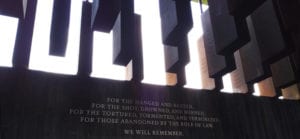
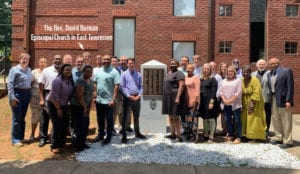
 I am old enough to remember when Jonathan Daniels was killed. I was just a child, but even then I vividly remember listening to the radio reports of this young Episcopalian seminarian who was shot at near point-blank range while in Alabama’s Black Belt helping African Americans there in their efforts to register to vote. I specifically remember turning to my parents and asking, “Why would they kill a minister?” My parents used the question to give me my first lesson on the moral corruption of the system of Jim Crow and segregation we as white Southerners were part of, and how it was our Christian duty to change it. From that moment on and through the years as I moved from youth to adulthood, I always looked upon Jon Daniels as my hero.
I am old enough to remember when Jonathan Daniels was killed. I was just a child, but even then I vividly remember listening to the radio reports of this young Episcopalian seminarian who was shot at near point-blank range while in Alabama’s Black Belt helping African Americans there in their efforts to register to vote. I specifically remember turning to my parents and asking, “Why would they kill a minister?” My parents used the question to give me my first lesson on the moral corruption of the system of Jim Crow and segregation we as white Southerners were part of, and how it was our Christian duty to change it. From that moment on and through the years as I moved from youth to adulthood, I always looked upon Jon Daniels as my hero.